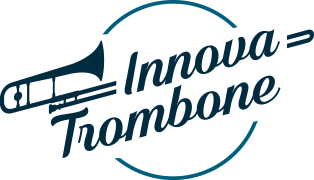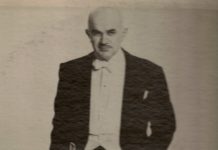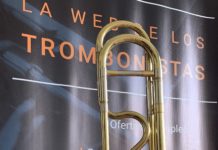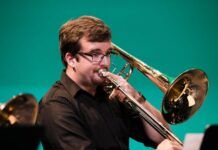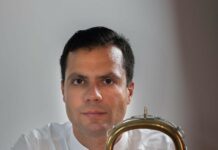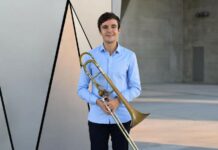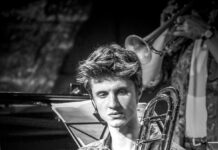Procedures for learning trombone
Learning playing trombone, like any other instrument, is a long and complex process involving several factors that determine the final result. While it is true that, during this process, we are not fully aware of the importance of these factors and the impact they have on our academic and later professional career.
We use to recognize our shortcomings when it is too late to fix them. My trombone professor at the Joaquín Rodrigo Superior Conservatory of Music in Valencia, Joaquín Vidal, remminded us what Vicente Prats, his partner in the center and former trumpet soloist in the Municipal Orchestra of Valencia, used to say. Prats, when he was 60 years old and had an excellent reputation as an instrumentalist: “If I were now 18 years old and knew what I know”. The moral of this comment is very clear: we need to fall into our own mistakes to learn from them and then correct what we have been wrong about.
From my experience of more than 30 years as a trombone teacher I can offer my personal vision —which of course does not have to be shared— about the teaching and learning of this instrument. So, with your permission, I will dare to give some procedures on this matter.
The learning of the trombone, according to my point of view, should meet at least these requirements:
Be functional
We must teach the student what is necessary at each moment of his educational itinerary. Therefore, it is convenient to provide only the essential information, without burdening the student’s mind with sophisticated ideas and concepts, often incomprehensible. Neither should one have to influence technical procedures that are excessively complicated. You have to try to make the difficult easy so that playing well results in a simple and natural process. Of course, using a progressive methodology that adapts to the peculiarities of each student and their educational needs.
Be motivating
As they say: fun is not the opposite of serious, it’s the opposite of boring. It can be taught without boredom. Learning is like food, we can make it more digestible if we pass it before by the blender of our imagination. To give an example, if we want the student to improve the sound quality by practicing long notes, why do not we propose as an alternative the practice of varied melodic designs with long-lasting figures and in different tones? Thus we could talk about an infinite number of activities… We must strive to avoid monotony and always encourage interest in study.
Be reflexive
We need to know why we do things. If we do not know the objective of an exercise, it will become a mere mechanical activity far from the purpose for which it was conceived. If there is no clear relationship between the means we use and the end we pursue, there is no significant learning. It is precisely after carrying out each learning activity when we must rethink the purpose of the exercise and reflect on whether the learning process has been effective; that is, if it has given the expected results. If this is not the case, we must revise our study plan and reformulate aspects that do not work.
Be integral
It is the teachers’ mission to help the student to learn music as an interrelation of learning that is fed back. Without this symbiosis the formative development will never be complete. Teachers and students must assimilate that without a prior analysis of the musical score (made from different areas: formal, harmonic, historical, aesthetic, technical-interpretative) there can be no real interpretive work. It is, therefore, a priority that the music education centers understand the importance of building educational projects that promote the didactic coordination among teachers, with the aim of planning content and activities that promote integral learning. In other words, it would be a matter of working cooperatively through common competencies.
Be oriented
So that a formative process like that of the musicians —defined in the curriculum of artistic education as a professionalist— is efficient and really acquires meaning, it must be focused in such a way as to prepare the students in the best way for their access to the working world. Neglecting that connection between the academic and the professional sphere is short-circuiting future employment possibilities. Therefore, it is crucial to talk with the student, to know their preferences and concerns, to show them the different options and to trace a path that will help them reach their goals. Based on all this, we must design a specific plan for each student in which we will release superfluous content and focus on what is truly meaningful and useful.
Be musical
In the world of metals we have succumbed to the tyranny of technology, prioritizing this aspect over any other factor of learning. And, in my modest opinion, we still make an even more serious error: unlink technical learning from music. Johan Cruyff said: “training with the ball”. Without a ball, the player loses the perspective that the priority for the game is the ball. The technique, without music, is nothing. We said it before: it is a means without an end. The teacher who makes good use of the didactic is one that connects the previous technical exercises that requires the interpretation of any work with its musical context and makes it an enriching experience, since in addition to interrelating and applying the different knowledge and skills worked previously, enjoy the revealing experience of discovering them or rediscover them in the musical score.
All these procedures pursue the same goal: learning to learn, a key competence in education and a determining factor in the formative success of any musician. There would be many more things to say: the imperative need to stimulate musical creativity and encourage improvisation, the importance of knowing how to play in a group and develop authentic teamwork… However, let’s leave it here.
Rafael Polanco



